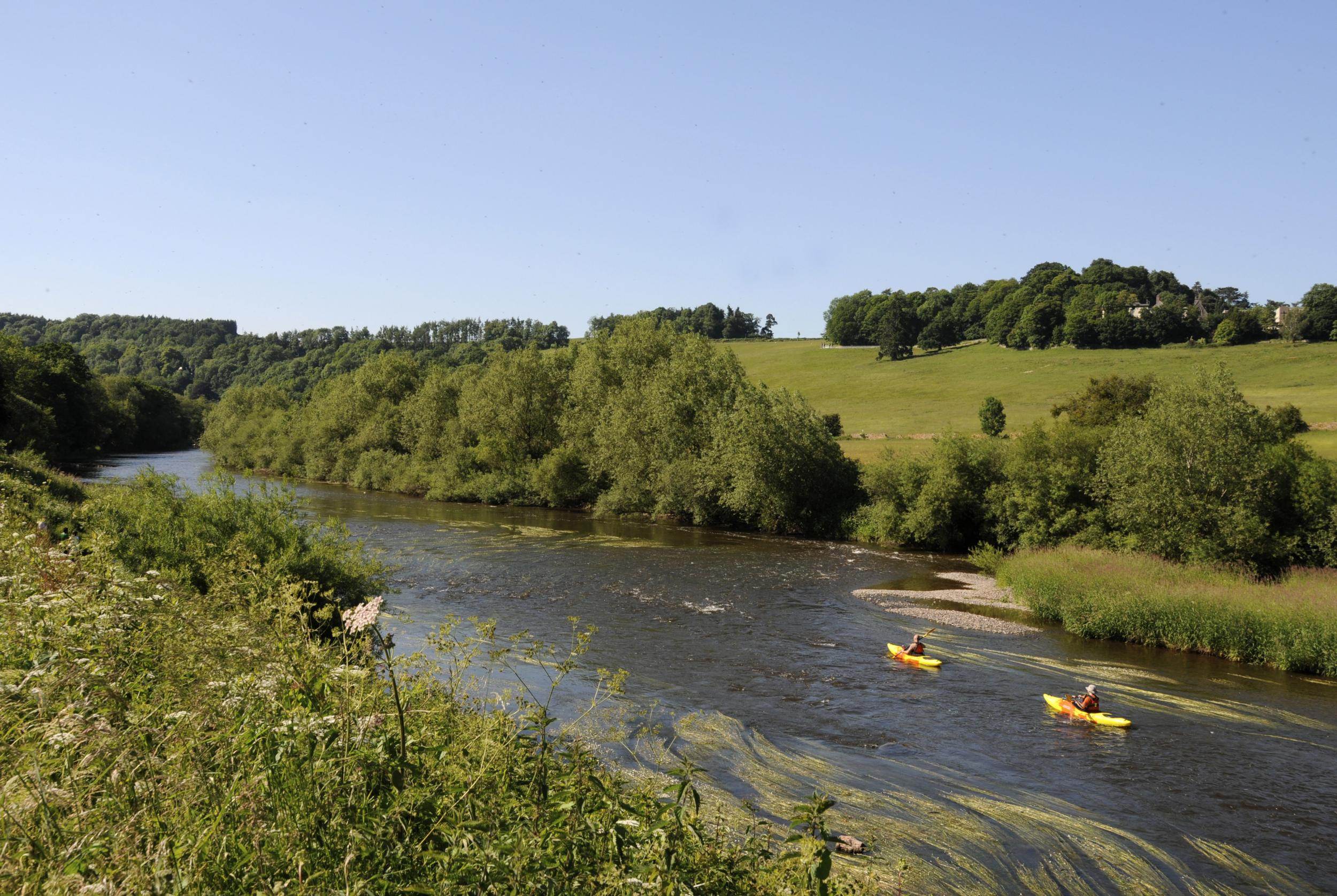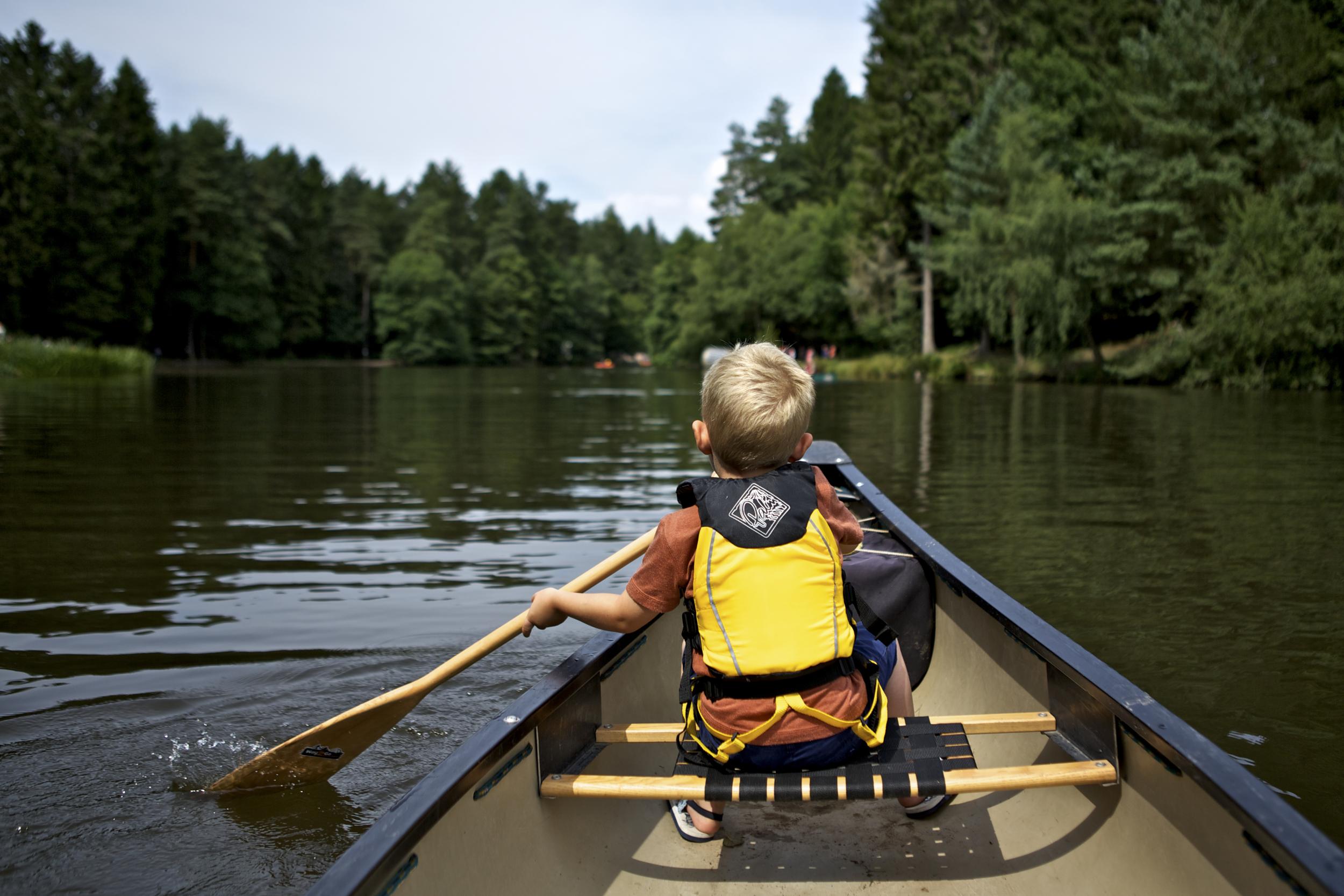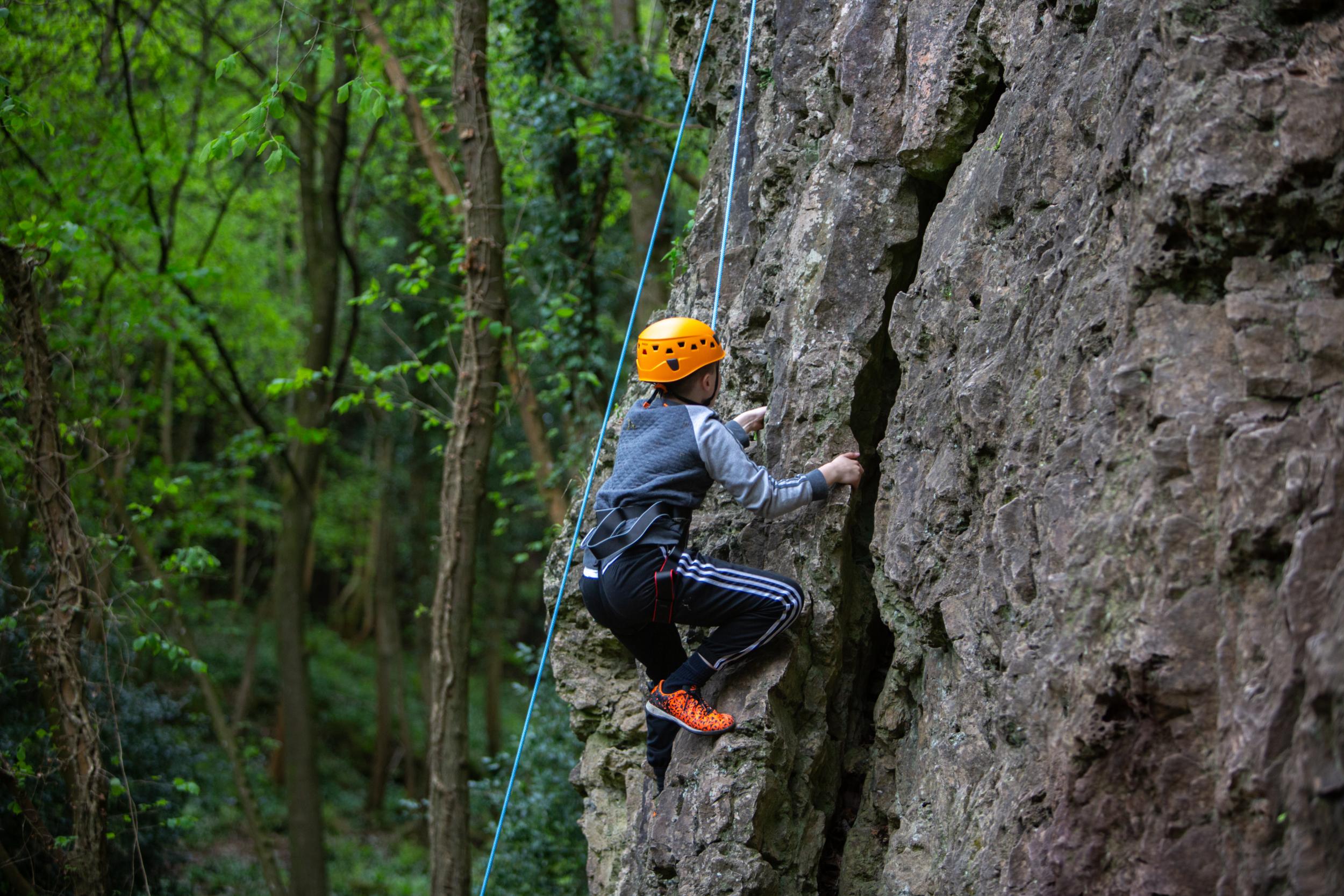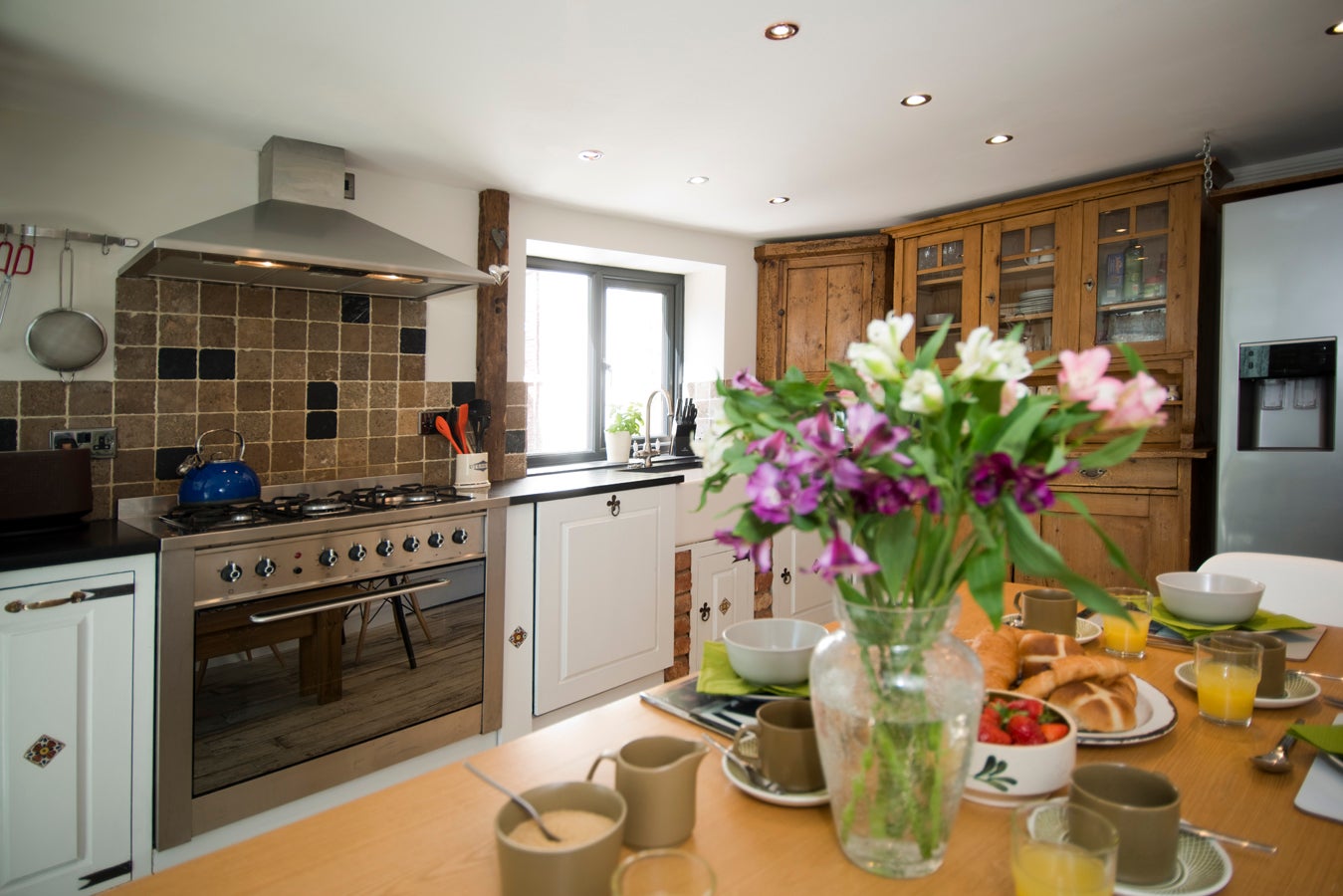Paddling down the River Wye 250 years after it inspired Britain’s first tourism boom
It’s as irresistible as the original tour 250 years ago, says Mark Henshall

Five days out we get news. “Lo-ren-zo? Is that what it’s actually called?” says my 14-year-old son, Gabriel, unconvinced about the most powerful hurricane ever recorded in the far east Atlantic. Our canoe trip to the Forest of Dean is looking dodgy as ominous storms swirl across The Azores and Gloucestershire riverbanks rise.
I wonder if William Gilpin, who took Revd John Egerton’s Wye Tour from Ross-on-Wye to Chepstow in 1770, had this kind of climate anxiety.
Gilpin went on to write an account of his riverboat tour, “Observations on the River Wye”, which many now view as the UK’s first tourist guide. The Wye Tour triggered a tourism boom by the late 18th century, as people came to view the valley from boats, starting a fashion for “picturesque beauty” travel rather than just history or architecture. This year is its 250th anniversary, with the year-long Gilpin 2020 Festival at Ross on Wye.
“If you have never navigated the Wye, you have seen nothing,” said Gilpin. We’ve arrived here – after the flash flood warnings subsided – to test his claims of the original package holiday.
We meet our guide Mark at Kerne Bridge, near Goodrich Castle, to paddle a nine-mile section down to Symonds Yat.
It’s a crisp day; thin mist hovers over the water and shards of sunlight hit the leaves around us, which have turned yellow, scarlet and purple.
As we shunt our two-man canoe onto the river, it breaks the surface reflection. The Wye is wide and takes us quickly; we put our paddles in suddenly to straighten up.
“It could be a bit fast out here today,” Mark warns us, sweeping alongside. “I reckon we’ll take an hour off it.”
Despite being in the Forest of Dean, views from the river are magnificently expansive on both sides. On advice, we steer to the middle of the river, to avoid low-hanging branches, eddies and better navigate oncoming bridges. From our position, it means we have a wide-angle shot as a wedge of swans flies across in front of us. We rest our paddles on the canoe and just glide, our mouths open. The cows moo; they’ve seen it all before.
The Wye itself is a Site of Special Scientific Interest and one of the most important rivers in Britain for conservation. You can see herons, cormorants, swifts, swallows and sand martins here. Further down, Symonds Yat Rock viewpoint is well known as one of the best to watch peregrine falcons.

“What is that?” asks Gabriel. “Yep, kingfisher, good spot, it’s watching for fish,” confirms Mark. Perched just above the waterline, its iridescent flashes of blue and copper are harlequin-like against the muddy banks.
Progress is rapid as the current pushes us along the meandering river and underneath the 500ft cliffs, carved out from limestone over the ages. We have the water to ourselves, only pausing occasionally to wave to fishermen – it’s one of the best rivers for salmon fishing outside of Scotland – like a pair of five-year olds. It turns out to be a good place to talk to a teenager; two hours in with a nice ache in our arms we’re both feeling a different rhythm and focus, a sense of space away from modern distractions.
There’s much nature to marvel at on this magical stretch of river. Pine martins, from the same family as otters and weasels, have just been returned to the Forest of Dean after facing extinction. “It changes every day, it never gets old,” says Mark.
Our eyes are brighter and bodies lighter as we synchronise our last few strokes to end our journey at Symonds Yat. The only connection between Symonds Yat West, on the Herefordshire side of the river, and Symonds Yat East on the Gloucestershire side, are two ancient hand ferries where the ferryman pulls you across the river using an overhead rope – for a small fee.

We dry off at Arch Cottage, our gorgeous stone cottage for the weekend in the village of Blakeney, on the forest’s eastern edge. It feels like a home from home with its cosy, stylish rooms, beautiful furnishings (wooden supports and beams, wrought iron stair rail) and snug summerhouse. A welcome basket of locally-sourced foodie delights is devoured gratefully, and after tasting a bottle of Severn Cider, we make a pit stop 10 minutes away in Awre to buy a crate from the brewery themselves.
On our final morning, we have unfinished business up on the cliffs at Symonds Yat Rock. The view from the top down to where we paddled is panoramic. We step into the woodland to rock climb with Laura from Borderlands Outdoor, treading over fat trunks and moving further under the thick, warm canopy. We pick and choose crags to climb and abseil like it’s an outdoor playground. Gabriel is in his element whistling up the rockfaces, stretching nimbly from point to point, and laughing at his more mechanical dad whose ambitions of Free Solo agility have stalled halfway up the crag.

There’s one last look at the mighty river below for us to savour, the light glinting on the water, electric, and an ethereal view, changeable yet somehow unchanged from 19th-century Wye watercolours. The water, for now, is thankfully at safe levels. Our trip back to the source of British tourism is one to appreciate immensely and keep safe.
Travel Essentials
Staying there
Arch Cottage, four nights sleeping five, from £448.
More information
Kayaking with Wyedean Canoe Hire costs £40 per two-person canoe per half day.
Climbing with Borderlands Outdoor costs £160 per group (maximum 10 people) per half day.
Visit wyedeantourism.co.uk
Join our commenting forum
Join thought-provoking conversations, follow other Independent readers and see their replies
Comments